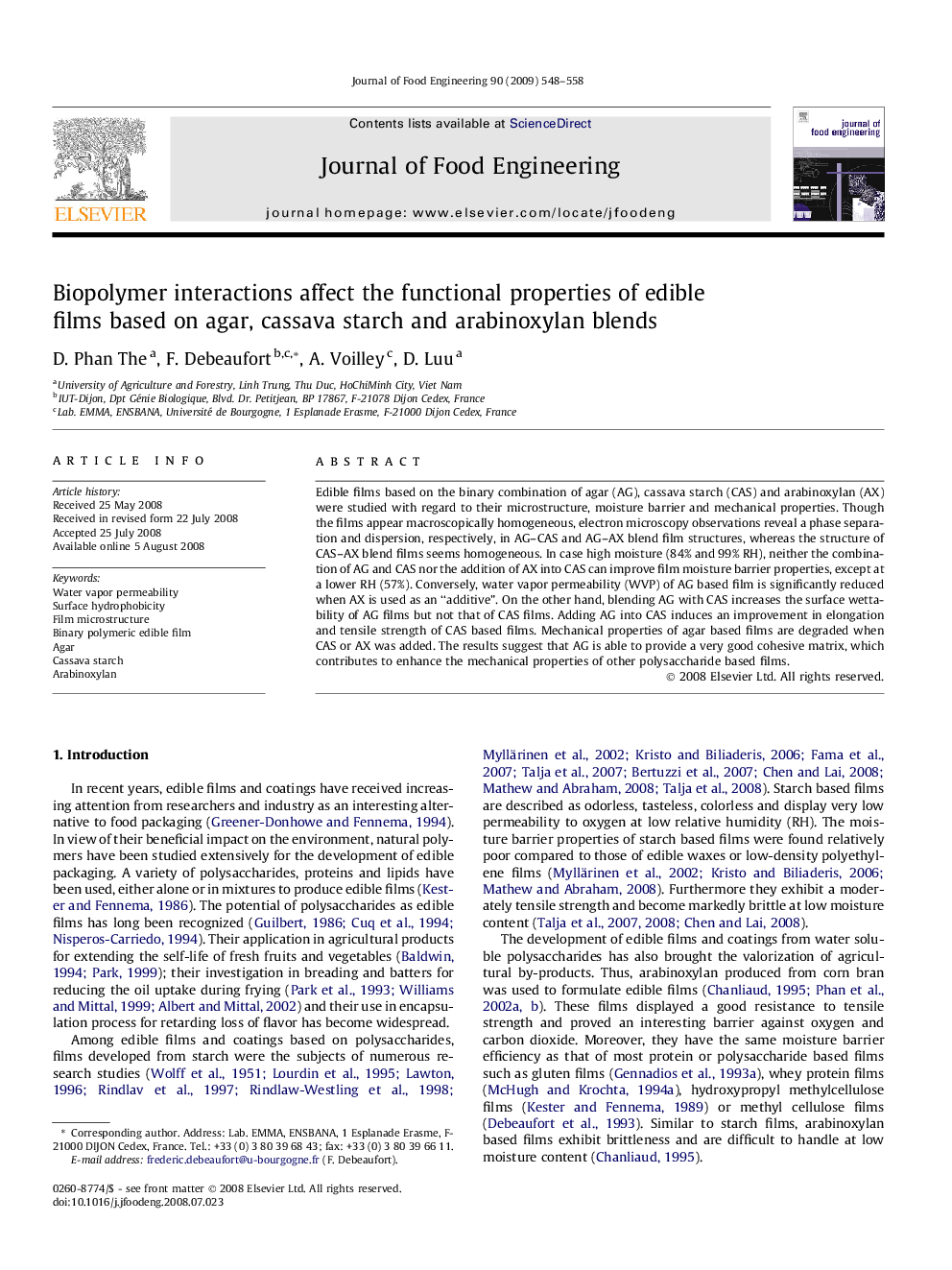| Article ID | Journal | Published Year | Pages | File Type |
|---|---|---|---|---|
| 224855 | Journal of Food Engineering | 2009 | 11 Pages |
Edible films based on the binary combination of agar (AG), cassava starch (CAS) and arabinoxylan (AX) were studied with regard to their microstructure, moisture barrier and mechanical properties. Though the films appear macroscopically homogeneous, electron microscopy observations reveal a phase separation and dispersion, respectively, in AG–CAS and AG–AX blend film structures, whereas the structure of CAS–AX blend films seems homogeneous. In case high moisture (84% and 99% RH), neither the combination of AG and CAS nor the addition of AX into CAS can improve film moisture barrier properties, except at a lower RH (57%). Conversely, water vapor permeability (WVP) of AG based film is significantly reduced when AX is used as an “additive”. On the other hand, blending AG with CAS increases the surface wettability of AG films but not that of CAS films. Adding AG into CAS induces an improvement in elongation and tensile strength of CAS based films. Mechanical properties of agar based films are degraded when CAS or AX was added. The results suggest that AG is able to provide a very good cohesive matrix, which contributes to enhance the mechanical properties of other polysaccharide based films.
